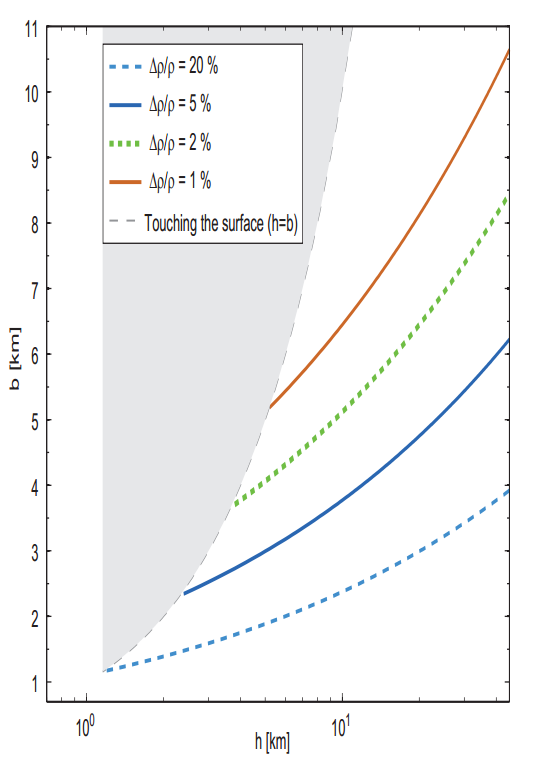Atomic Clocks To Measure Earth’s Geoid From The Ground
The Earth’s geoid is the shape the planet would assume if its surface were made of water. Naturally, there’s little dispute over the shape of the geoid over the oceans, where it varies by only 100 metres or so because of variations in the Earth’s subsurface density.

But over land, the geoid is much more tricky to pin down. Physicists do it by measuring the altitude of satellites as they orbit. They then crunch the data to calculate the shape of a surface that most accurately reproduces the global sea level. They then extrapolate this across the continents.
But the results have important limitations. First of all, the calculations are intensive and the solutions can be multivalued so a subjective decision has to be made to choose a particular value. What’s more, the results have a spatial resolution limited to 400 km or so.
Over the continents, where there are myriad variations in density in the Earth’s crust and below, that’s not good enough to detect many important geological formations such as fluid reservoirs and so on.
Today, Ruxandra Bondarescu at the University of Zürich in Switzerland a few pals say there is a better way to do it, or at least, there soon will be, based on atomic clocks..
According to general relativity, clocks at different distances from a massive body should tick at different rates; the closer going more slowly. But the difference is tiny, much smaller than has been possible to measure in detail. Until recently.
In 2010, physicists used this idea to measure a 33 cm change in height between two clocks connected by optical fibre. That’s more the enough detail to get a good idea of the shape of the geoid.
The idea, say Bondarescu and co, is to place one clock at sea level, where it sits at exactly the height of the geoid. The second clock is taken to some point inland, where it is synchronised with the first using a fibre.
The second clock will then run faster or slower, depending on whether it is above or below the geoid. The change in clock rate reveals exactly how much higher the second clock is above or below the geoid.
The advantage over satellite methods is first, that it is much more accurate and second that it is a direct measurement of the geoid at that location, rather than an indirect one that must be processed extensively before producing an answer.
There are disadvantages, of course. The most significant is that atomic clocks with the required accuracy are only available in the laboratory. That’s set to change in the next few years. Various groups are building portable clocks with unprecedented accuracy.
For example, the European Space Agency is working towards a clock with an accuracy of one part in 10^18 designed to operate in space. The aim is to test the equivalence principle (if the mission is funded).
Bondarescu and co say this kind of sensitivty will reval all kinds of subsurface detail. In one numerical example, they show that today’s best clocks ought to be able to detect the geoid perturbation caused by a 1.5 km radius sphere with 20% density anomaly buried at a depth of 2 km depth in the Earth’s crust.
Measuring the geoid using atomic clocks is not a new idea, of course. People have been discussing the possibility for twenty years. The purpose of this paper by Bondarescu and co so to highlight the fact that atomic clocks accurate enough to do the job are now being seen in capacity and will soon be out in the wild.
When that happens, we’ll have the capability to map the geoid and the subsurface structures that determine it with unprecedented accuracy.
Ref: arxiv.org/abs/1209.2889: Geophysical Applicability Of Atomic Clocks: Direct Continental Geoid Mapping
Keep Reading
Most Popular
Large language models can do jaw-dropping things. But nobody knows exactly why.
And that's a problem. Figuring it out is one of the biggest scientific puzzles of our time and a crucial step towards controlling more powerful future models.
How scientists traced a mysterious covid case back to six toilets
When wastewater surveillance turns into a hunt for a single infected individual, the ethics get tricky.
The problem with plug-in hybrids? Their drivers.
Plug-in hybrids are often sold as a transition to EVs, but new data from Europe shows we’re still underestimating the emissions they produce.
Stay connected
Get the latest updates from
MIT Technology Review
Discover special offers, top stories, upcoming events, and more.